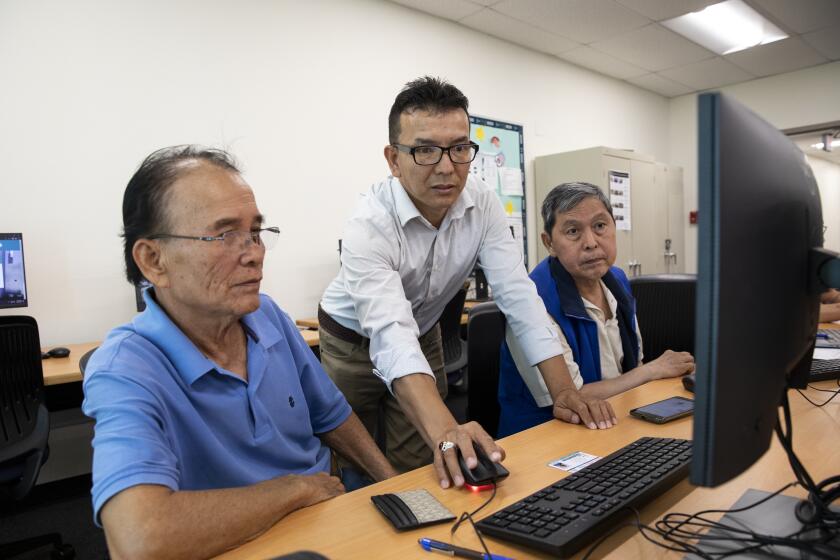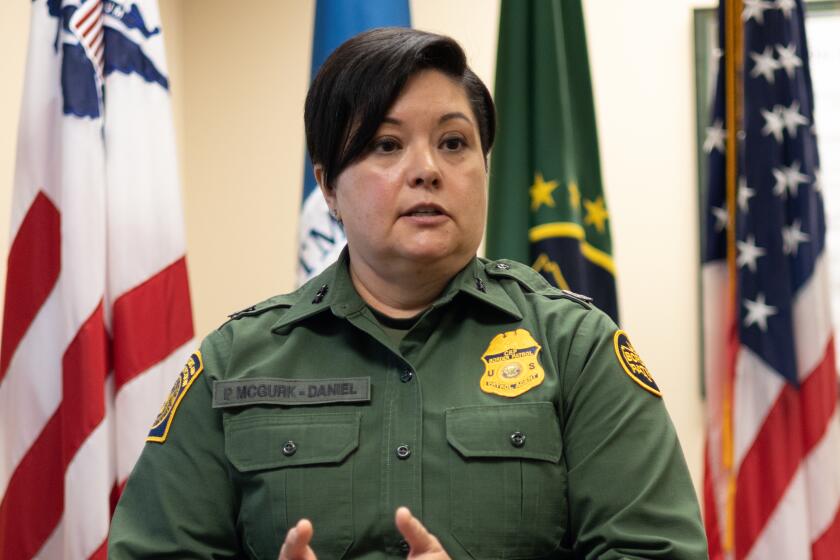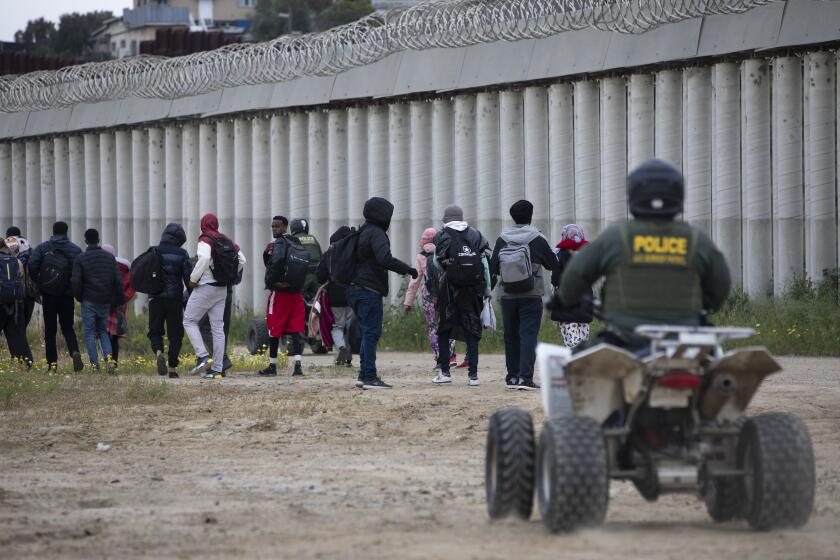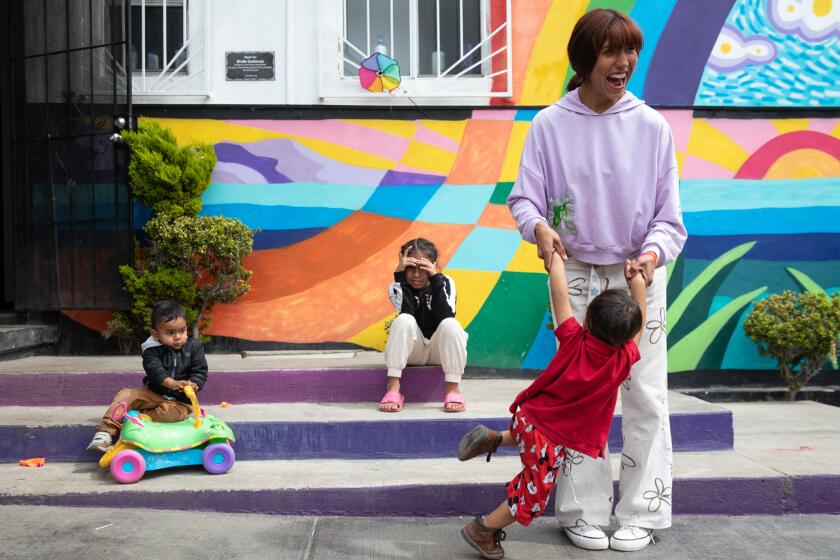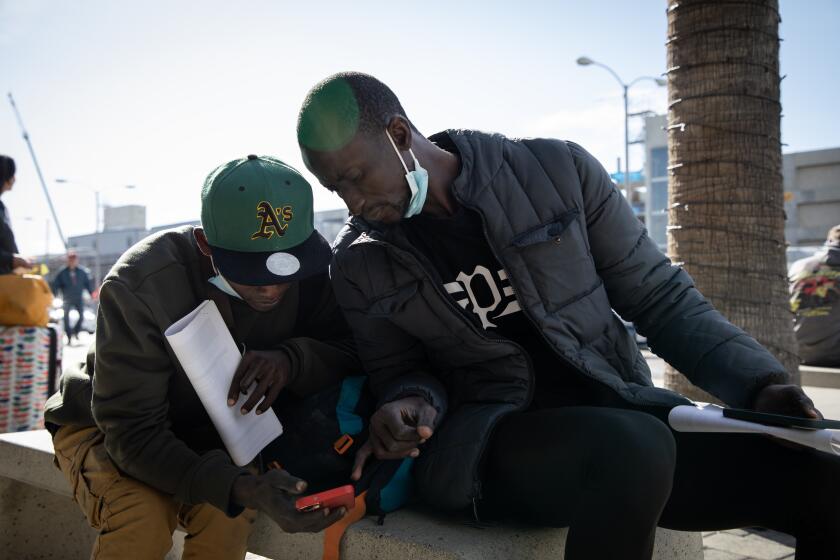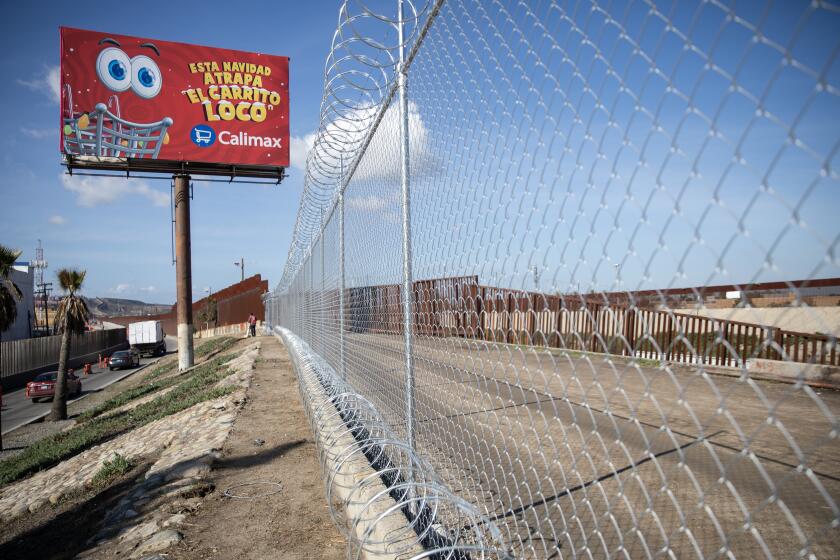CBP to begin requiring mobile app for asylum seekers to request protection at ports of entry

The CBP One application has long received pushback from many asylum advocates due to concerns about privacy and the possibility it will be used by others to scam asylum seekers.
Migrants hoping to cross through U.S. ports of entry to request asylum while a pandemic policy remains in effect at the border will be required to use a mobile app beginning Thursday to schedule appointments with U.S. Customs and Border Protection.
CBP has previously partnered with nonprofit organizations who identified particularly vulnerable migrants to come into the United States under exemptions to Title 42, a policy that for nearly three years has meant that asylum seekers cannot get permission to come onto U.S. soil to request protection. Though general asylum processing at ports will remain closed unless and until Title 42 lifts, the introduction of the app, known as CBP One, for Title 42 exemptions could signal the beginning of a major shift that the Biden administration has been hoping to make in asylum procedures at ports of entry.
The administration has tried to promote the app as a means of making asylum processing more efficient.
“The app is designed to discourage individuals from congregating near the border and creating unsafe conditions,” said Homeland Security Secretary Alejandro Mayorkas in a speech last week.
“After the Title 42 order is lifted, this scheduling mechanism will be available for noncitizens, including those who seek to claim asylum, to schedule a time to present themselves at a port of entry for inspection and processing, rather than arriving unannounced at a port of entry or attempting to cross in-between ports of entry,” Mayorkas said. “Those who use this process will generally be eligible for employment authorization while they are in the United States.”
CBP told reporters on a call early last year that it estimated saving about 15 minutes of time per applicant when using CBP One.
However, many human rights advocates have pushed back on its use in asylum cases.
“Accepting the premise that CBP One would make processing more efficient is buying into CBP’s claim that it lacks resources to process asylum seekers, and that’s a lie,” said Erika Pinheiro, executive director of legal services nonprofit Al Otro Lado. She referenced information from a whistleblower who came forward in a lawsuit brought by her organization that revealed evidence that the federal government had lied about its capacity to avoid having to process asylum seekers in the years before the pandemic.
“It is not more efficient than processing people on arrival like every other traveler,” she added.
She and other advocates are also worried about the app’s use of geo-location and facial recognition and the ways those features could compromise asylum seekers’ security.
San Ysidro is among the eight ports of entry participating in the new CBP One process, as is the Calexico Port of Entry, according to a CBP document. CBP One will also offer appointments for the Texas crossings of Brownsville, Eagle Pass, Hidalgo, Laredo and El Paso, as well as the Nogales Port of Entry in Arizona.
Beginning on Thursday, migrants can submit their information through the app to CBP and receive appointments as soon as Jan. 18, according to CBP. The nonprofits will continue bringing exemptions to CBP through Jan. 17.
Edward Orendain, interim executive director of Border Angels, one of the nonprofits that has been working with CBP, said it’s not yet clear what his organization’s role will be, if any, going forward in the process.
Appointments will be available up to two weeks in advance, according to a CBP spokesperson. It is not clear how many appointments will be available per day. Under the system with the nonprofits, CBP allocated spots to each organization for a total of 180 people crossing through the San Ysidro Port of Entry per day, according to Port Director Maritza Marin.
People requesting exemptions will have to attest that they meet at least one of the vulnerability criteria listed in the app, according to CBP. Those are: physical or mental illness, disability, pregnancy, no access to safe housing or shelter in Mexico, under the age of 21, over the age of 70, or have been threatened or harmed while in Mexico.
CBP One is available in English and Spanish.
Pinheiro worried that there would be no way to ensure people who needed appointments would get them. She said that groups who have previously used the app have found that it crashes frequently on weak internet connections, which would be likely to leave out the most vulnerable asylum seekers while prioritizing those with more resources.
“It’s like Ticketmaster but for asylum seekers — and then if you don’t get it, you don’t get it,” Pinheiro said. “There’s no queue of people who tried to get an appointment and didn’t get it.”
The change comes as the Biden administration moves to increase its use of Title 42.
Title 42, named for the part of U.S. law related to public health that it comes from, was put in place in March 2020 by the Trump administration. It blocks asylum seekers and other undocumented migrants from coming onto U.S. soil and instructs border officials to expel back to Mexico or their home countries those who cross without permission.
Though the policy applies in theory to any border crosser without documents, in practice, it mainly is used on nationalities that Mexico has agreed to receive back. In the first year of the Biden administration, that meant that Mexicans, Guatemalans, Hondurans and Salvadorans were expelled while other nationalities who crossed without permission onto U.S. soil were able to request asylum.
The Biden administration recently negotiated with Mexico to expand the nationalities it is willing to receive back to include Venezuelans, Nicaraguans, Cubans and Haitians.
Initially, government officials said the policy was meant to slow the spread of COVID-19, but those who want to keep it long-term have said they want to use it to deter migration, not as a public health measure.
Since last spring, the White House has worked with selected nonprofits to identify especially vulnerable asylum seekers who were at increased risk while they waited because of issues — such as medical concerns or threats in northern Mexico. Migrants selected by the program were given dates to present at certain ports of entry to be processed under exemptions to Title 42.
Toward the end of last year, concerns surfaced about corruption in the exemption process in Tijuana.
The Union-Tribune learned of allegations that some asylum seekers had to pay for spots to be screened by CBP or that they paid to shorten their waits even though the process is supposed to be free. Asylum seekers and nonprofits also reported instances of scammers selling contact information of the organizations doing the processing.
There are concerns that people looking to make a profit off of asylum seekers’ vulnerability will similarly sell access to the CBP One app. CBP emphasizes in a fact sheet available online in English and Spanish that the application is free.
People who aren’t tech savvy, aren’t literate or speak a language other than English or Spanish are among the most likely to be exploited, Pinheiro said.
“If scammers can figure out how to scam Ticketmaster to get all the tickets, they’re going to figure this out,” Pinheiro said. “There’s going to be somebody who figures out how to get all the appointments.”
Get Essential San Diego, weekday mornings
Get top headlines from the Union-Tribune in your inbox weekday mornings, including top news, local, sports, business, entertainment and opinion.
You may occasionally receive promotional content from the San Diego Union-Tribune.

